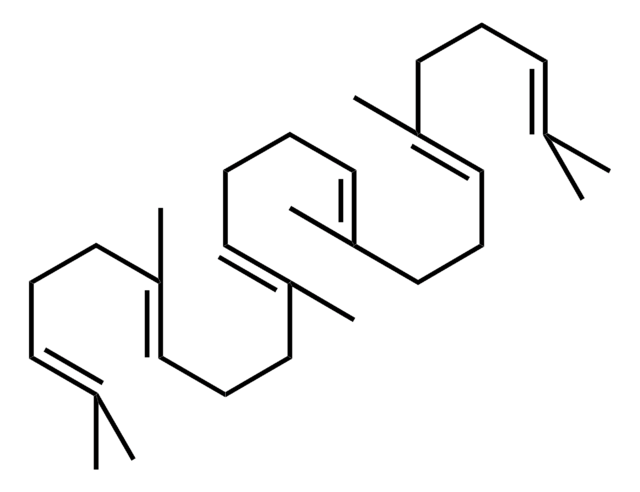80165
Phytane
analytical standard
Sinónimos:
2,6,10,14-Tetramethylhexadecane
About This Item
Productos recomendados
grado
analytical standard
Nivel de calidad
Ensayo
≥95.0% (GC)
caducidad
limited shelf life, expiry date on the label
técnicas
HPLC: suitable
gas chromatography (GC): suitable
bp
69-71 °C/0.001 mmHg (lit.)
densidad
0.791 g/mL at 20 °C (lit.)
aplicaciones
environmental
food and beverages
Formato
neat
cadena SMILES
CCC(C)CCCC(C)CCCC(C)CCCC(C)C
InChI
1S/C20H42/c1-7-18(4)12-9-14-20(6)16-10-15-19(5)13-8-11-17(2)3/h17-20H,7-16H2,1-6H3
Clave InChI
GGYKPYDKXLHNTI-UHFFFAOYSA-N
Aplicación
Envase
Código de clase de almacenamiento
10 - Combustible liquids
Clase de riesgo para el agua (WGK)
WGK 3
Punto de inflamabilidad (°F)
Not applicable
Punto de inflamabilidad (°C)
Not applicable
Equipo de protección personal
Eyeshields, Gloves
Elija entre una de las versiones más recientes:
¿Ya tiene este producto?
Encuentre la documentación para los productos que ha comprado recientemente en la Biblioteca de documentos.
Nuestro equipo de científicos tiene experiencia en todas las áreas de investigación: Ciencias de la vida, Ciencia de los materiales, Síntesis química, Cromatografía, Analítica y muchas otras.
Póngase en contacto con el Servicio técnico






![Benzo[ghi]perylene analytical standard](/deepweb/assets/sigmaaldrich/product/structures/154/740/c50ff1be-dfb4-4159-a98c-9cecf9206ad3/640/c50ff1be-dfb4-4159-a98c-9cecf9206ad3.png)
